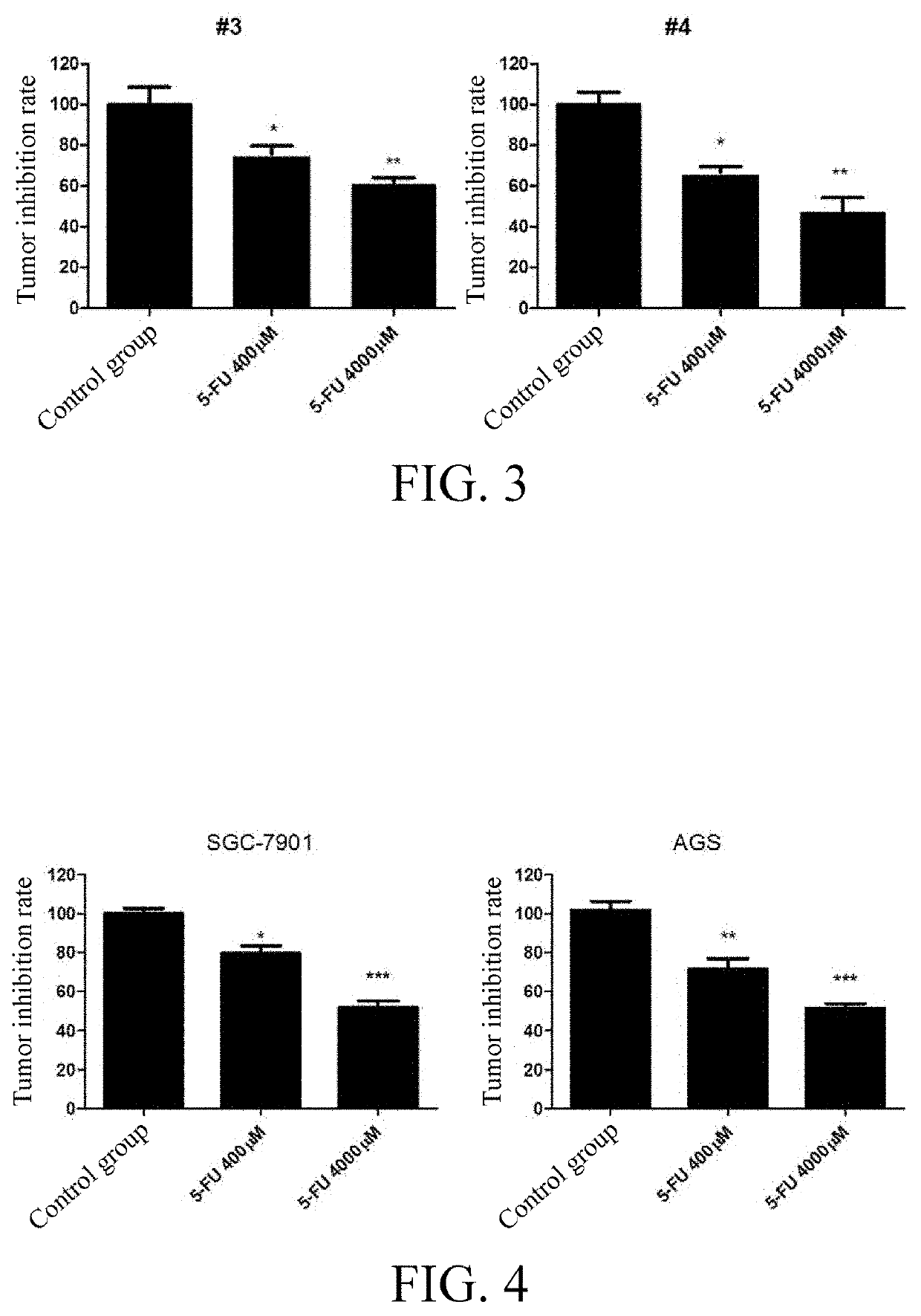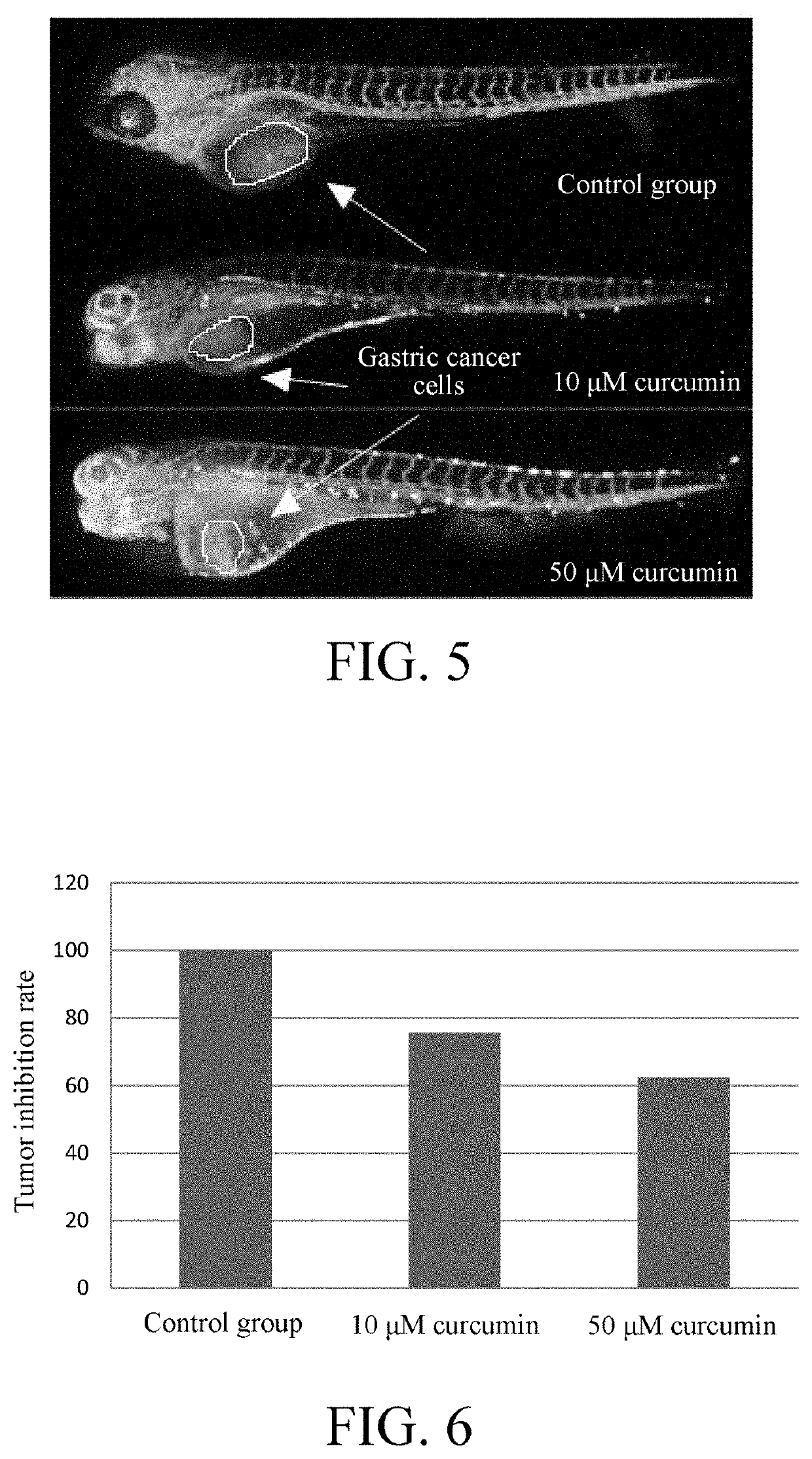Tumor cell xenograft model in zebrafish, and methods of constructing and using the same
a tumor cell and zebrafish technology, applied in the field of biomedicine, can solve the problems of affecting the survival rate of patients, the limited treatment options of gastric cancer, and the major public health problem of tumor diseases, and achieve the effect of accurate screening out, accurate guidance for clinical medication, and accurate screening out patients
- Summary
- Abstract
- Description
- Claims
- Application Information
AI Technical Summary
Benefits of technology
Problems solved by technology
Method used
Image
Examples
example 1
ion of a Patient-Derived Gastric Cancer Cell Xenograft Model in Zebrafish of the Present Invention
[0047]1. Isolation of Primary Cells from Gastric Cancer Tissue
[0048]The patient-derived clinical tissue biopsy that was a surgical specimen of gastric cancer was placed in physiological saline. The blood clot, necrotic tissue, fat and connective tissues on the surface of the tumor tissue were removed under aseptic conditions. The tissue was cut by an ophthalmic scissor after sterilization, and washed 2 times with sterile phosphate buffer (pH 7.4). A small amount of phosphate buffer was added, and the tissue was repeatedly cut with an ophthalmic scissor until the tissue became a paste and was about 1 mm3. 0.25% trypsin was added and the tissue was digested at 37° C. for 10 minutes. After the tissue mass was observed to be completely dissociated, centrifugation was performed to remove trypsin. The cells were re-suspended in RPMI-1640 medium containing 10% FBS (fetal calf serum).
[0049]2. S...
example 2
n of the Clinical Anticancer Effect of 5-FU with 4 Patient-Derived Xenograft Zebrafish Models
[0056]1. Determination of Safe Dose
[0057]Two days after fertilization, the zebrafish embryos were treated (soaked) with various concentrations of 5-FU for three days, and the highest 5-FU concentration within the safety range for embryos was determined to be 4000 nM.
[0058]2. Drug Treatment of Zebrafish Embryos
[0059]The 4000-μM and 400 μM 5-FU were used to soak the zebrafish embryo model injected with the primary gastric cancer cells derived from different patients prepared by the method of Example 1 for three days, and 0.1% DMSO was used as a solvent control.
[0060]3. Observation of Antitumor Effect Under Fluorescence Microscope
[0061]The proliferation and spread of red patient-derived cells in the zebrafish embryos were observed after treatment. The red cells were photographed under a fluorescence microscope, and the red fluorescence intensity was quantified by Image Pro Plus software to calc...
example 3
n of the Anticancer Effects of 5-FU with Two Human Gastric Cancer Cell Line (SGC-7901 and AGS) Xenograft Models in Zebrafish
[0064]1. Drug Treatment of Zebrafish Embryos
[0065]4000 μM and 400 μM5-FU were used to soak the zebrafish embryos injected with gastric cancer cell lines (SGC-7901 and AGS) (constructed as in Example 1) for three consecutive days, and 0.1% DMSO was used as a solvent control.
[0066]2. Observation of Antitumor Effect Under Fluorescence Microscope
[0067]The proliferation and spread of red patient-derived cells in the zebrafish embryos were observed after treatment. The red cells were photographed under a fluorescence microscope, and the red fluorescence intensity was quantified by Image Pro Plus software to calculate the anti-tumor effect of 5-FU by a formula: Tumor inhibition rate of the drug=(the fluorescence intensity of the treatment group / the fluorescence intensity of the control group)*100% (see FIG. 4).
[0068]The results with human gastric cancer cell line xeno...
PUM
 Login to View More
Login to View More Abstract
Description
Claims
Application Information
 Login to View More
Login to View More - R&D
- Intellectual Property
- Life Sciences
- Materials
- Tech Scout
- Unparalleled Data Quality
- Higher Quality Content
- 60% Fewer Hallucinations
Browse by: Latest US Patents, China's latest patents, Technical Efficacy Thesaurus, Application Domain, Technology Topic, Popular Technical Reports.
© 2025 PatSnap. All rights reserved.Legal|Privacy policy|Modern Slavery Act Transparency Statement|Sitemap|About US| Contact US: help@patsnap.com



